Kingdom Animalia Order Lepidoptera Genus Polyommatus Higher classification Polyommatus | Phylum Arthropoda Family Lycaenidae Scientific name Polyommatus semiargus Rank Species | |
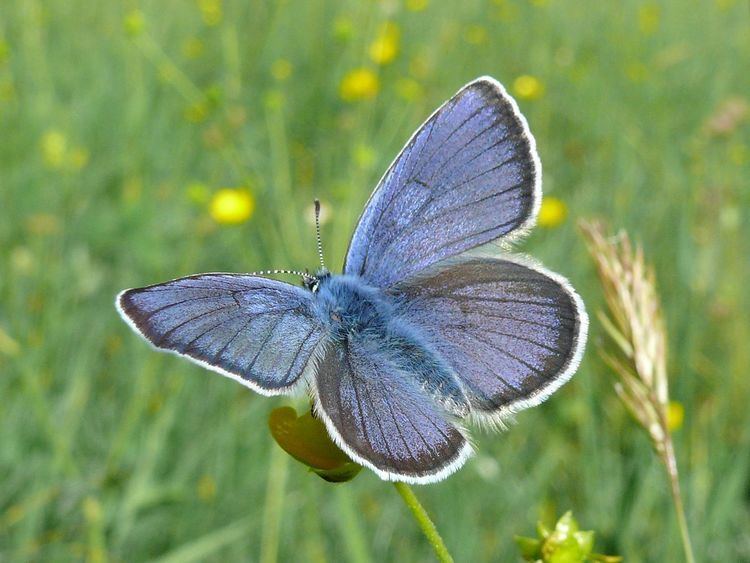 | ||
Similar Polyommatus, Butterflies and moths, Cyaniris, Small blue, Glaucopsyche alexis | ||
Polyommatus semiargus engbl vinge
Polyommatus semiargus, the Mazarine blue, is a butterfly in the family Lycaenidae.
Contents
- Polyommatus semiargus engbl vinge
- Polyommatus semiargus niittysinisiipi 17 62011 vantaa finland
- Subspecies
- Distribution
- Habitat
- Description
- Biology
- References
Polyommatus semiargus niittysinisiipi 17 62011 vantaa finland
Subspecies
Subspecies include:

Distribution
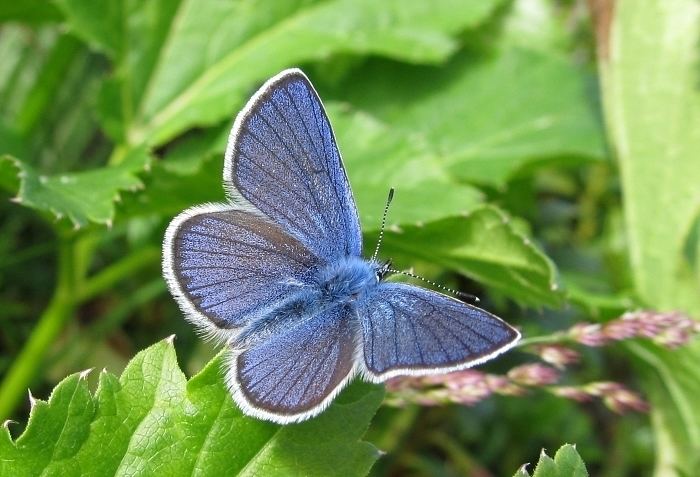
The Mazarine blue's population is distributed throughout continental Europe, even reaching into the Arctic Circle, temperate Asia, Mongolia, Morocco, the Middle East, and Morocco. There was a large native population in Britain in the early part of the 19th century, but it disappeared before the 20th century, though single vagrants have been spotted, and some estimates of British resident extinction are as late as 1906. In 2009, UNESCO was researching a possible British reintroduction of the Mazarine blue to Britain.
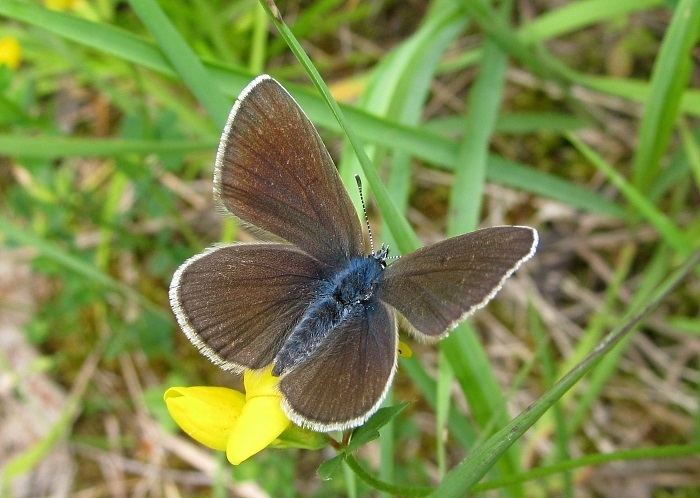
Recently, the Mazarine blue's numbers have been declining in its European range (particularly Scandinavia) and the reason remains unclear.
Habitat
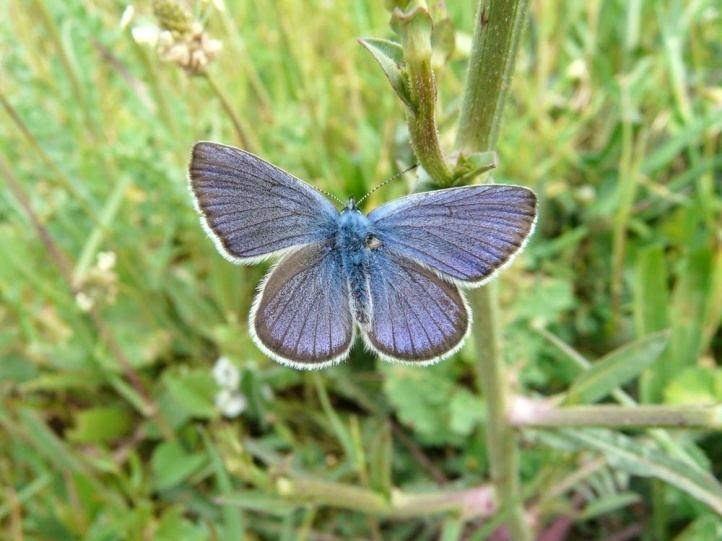
This common species inhabits meadows, pastures, grasslands and flowery grassy damp areas up to 2200m. It seems to prefer places which are not fertilized and not used for fodder production.
Description
The wingspan of the male and female are similar, at 32–38 mm.
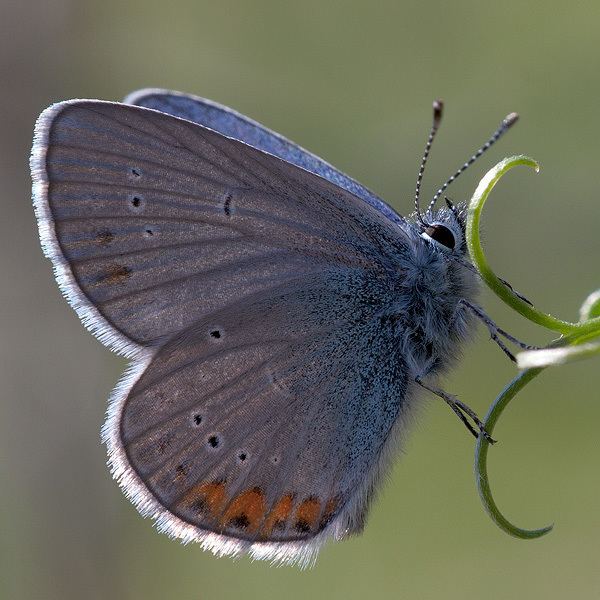
These butterflies present a sexual dimorphism. The male Mazarine blue's wings are a deep blue with an heavy venation and are slightly larger in diameter than the female's. The upperside of the wings shows black borders and white fringes. The female Mazarine blue is brown. The underside of the wings is greyish or ocher, with a series of black spots surrounded by white and a blue scaling in the basal area.
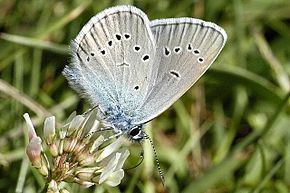
Both sexes lack orange markings and have a dark violet or brown body colour. The butterfly has been compared to the common blue, and the Grecian Helena subspecies which has orange markings.
This species is rather similar to Cupido minimus, but in the underside hindwings of the Mazarine blue the black spot in space 6 and the two spots next to it form an obtuse angle, while in C. minimus they create an acute angle.
The larva is yellow green with darker lines and has fine hairs and dark brown spiracles. The pupa is olive green and attached to the food plant with a silk girdle.
Biology
This species has one brood each year. It overwinters as a young larva. Adults fly from from May to August. Caterpillars mainly feed on Red Clover (Trifolium pratense) and other species of Trifolium (Trifolium medium, Trifolium spadiceum), on Vicia cracca, Anthyllis, Genista and Melilotus.
